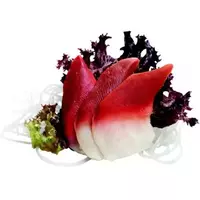Hokkigai mollusk

Mollusks, also called soft-ground species, belong to primary animals. Currently, science knows about 150 00 species of mollusks. It is noteworthy that mollusks are common in any species of water bodies throughout the planet Earth. Molluscs vary in structure and habitat. Among the largest species can be distinguished: squid, octopus and cuttlefish.
Hokkigai or hokkigai mollusk is a subspecies of bivalve sand mollusks that live in water. Another name for the species is laminar and has up to 10, 000 varieties. Hokkigai mollusk belongs to an exclusively aquatic group of mollusks and lives in most fresh and salty water bodies, however, this species is most common off the coast of Japan.
The word mollusk in Latin means soft, this name is not given to the species by chance. The body of the shellfish hokkigai is really soft to the touch, and the meat tastes tender. In addition to shellfish hokkigai, the species of bivalves includes such marine life as mussels, pearls, oysters, scallops, as well as pearls. Some bivalves, such as hokkigai mollusk, mussels or oysters, are used for food.
Clams of the bivalve group belong to meliorator species that are able to purify water in their habitat. And the substance that releases the bissus mollusk is used to produce the visson tissue. There are several varieties of shellfish hokkigai in nature, so the appearance of this product will not always be the same. Almost all known species of shellfish hockey are used for food.
In Japan, hokkigai mollusk is called "surf" and is considered the original Japanese national dish. Hokkigai shellfish is served as a main course, which is distinguished by its delicate taste and subtle oceanic aroma. Hokkigai mollusk is also a popular ingredient for Japanese sushi or sashimi. It is noteworthy that in combination with Nori algae, as well as sushi rice, hokkigai mollusk changes its taste and aroma.
The shellfish hokkigai meat is tender and juicy, tastes like chicken. Usually, specialized stores sell ready-to-eat shellfish hokkigai meat. If you are new to cooking Japanese cuisine, then it is worth starting with simple recipes. For example, hokkigai mollusk is easy to use in the preparation of sushi or sashimi. You just need to cut the meat of the shellfish hockey in pieces and combine with the other ingredients of the dish.
In addition to sushi, you can cook fried shellfish hokkigai meat. As a result of heat treatment of hokkigai, the mollusk will change its original color to red and white colors. Hokkigai mollusk is added to seafood salads, as well as soups. Hokkigai shellfish is nutritious in its meat, so a small portion of the product will be enough to saturate the body with useful substances.
hockey mollusk 76.7 kCal
Energy value of hockey mollusk (Ratio of proteins, fats, carbohydrates - ju):
Proteins: 16.7 (~ 67 kCal)
Fats: 1.1 g (~ 10 kCal)
Carbohydrates: 0 g (~ 0 kCal)
Energy ratio (b | y): 87% | 13% | 0%
 Español
Español Français
Français Português
Português Русский
Русский 简体中文
简体中文 繁體中文
繁體中文 日本語
日本語 한국어
한국어 العربية
العربية Türkçe
Türkçe Қазақ
Қазақ Deutsch
Deutsch Italiano
Italiano Українська
Українська
